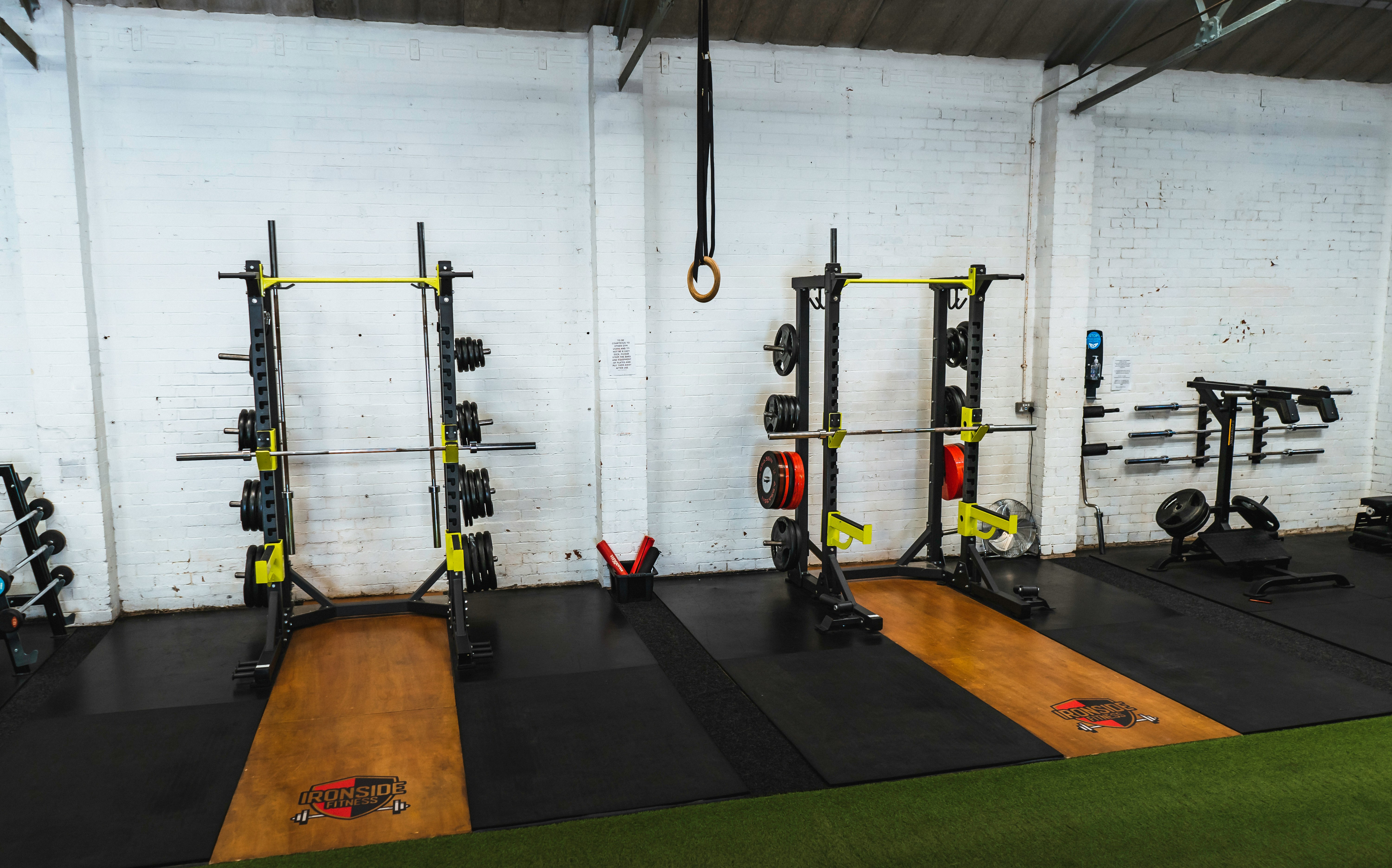What Type of Exercise Is Best for Mental Health?
By RG team · 13 min read
Last Updated on June 25, 2023
Wait a minute...

Introduction
The impact of exercise on mental health has been widely recognized and studied in recent years. It is becoming increasingly clear that engaging in regular physical activity is not only good for our physical well-being but also plays a significant role in promoting mental well-being. In this article, we will explore the question of what type of exercise is best for mental health.
Physical activity has been shown to have numerous benefits for mental health, including reducing symptoms of anxiety and depression, improving mood, enhancing cognitive function, and boosting self-esteem. Exercise acts as a natural stress reliever, releasing endorphins that help to alleviate feelings of tension and improve overall mood.
The World Health Organization recommends at least 150 minutes of moderate-intensity aerobic activity or 75 minutes of vigorous-intensity aerobic activity per week, along with muscle-strengthening activities at least two days per week. But when it comes to mental health benefits, is one type of exercise better than another? Let's delve into the research and explore the best exercises for mental health.
Aerobic exercises for promoting mental health
Research has shown that aerobic exercises, which get your heart rate up and increase oxygen flow to the brain, can be particularly beneficial for mental health. According to a study published in The Lancet Psychiatry, aerobic or gym exercises have been found to help promote good mental health.
Aerobic exercises encompass a wide range of activities, including rope skipping, boxing, weightlifting, and using a rowing or elliptical machine. These exercises not only provide physical health benefits but also have a positive impact on mental well-being. Engaging in aerobic exercises can help reduce symptoms of anxiety and depression, improve mood, and enhance overall cognitive function.
Aerobic activities promote the release of endorphins, which are known as the "feel-good" hormones. These neurotransmitters interact with receptors in the brain, reducing pain perception and creating a sense of well-being. Additionally, aerobic exercises offer an opportunity for social interaction and engagement, which can further contribute to mental health improvement.
If you're looking for the best type of exercise to support your mental well-being, consider incorporating aerobic activities into your routine. Whether it's a high-energy workout at the gym or simply going for a brisk walk or jog outdoors, aerobic exercises offer a holistic approach to maintaining both physical and mental health.
Anaerobic exercises for enhancing mental well-being

Photo by Markus Spiske on Unsplash
While aerobic exercises are known for their mental health benefits, anaerobic exercises shouldn't be overlooked. Anaerobic exercises are activities that involve short bursts of intense effort, focusing on building muscle strength and endurance. This type of exercise can also have a positive impact on mental well-being.
One popular form of anaerobic exercise is circuit training, which involves performing a series of different exercises in rapid succession, targeting various muscle groups. Circuit training not only helps to build strength and improve physical fitness but also provides mental stimulation and boosts mood.
Weight training is another anaerobic exercise that has mental health benefits. Lifting weights not only helps to increase muscle strength but also contributes to a sense of accomplishment and self-confidence. Research has shown that weightlifting can enhance mood and reduce symptoms of anxiety and depression.
Additionally, activities like yoga incorporate elements of both anaerobic and aerobic exercise. Yoga combines strength-building postures with controlled breathing and mindfulness, creating a mind-body connection that can help to reduce stress, improve mood, and enhance overall mental well-being.
When it comes to choosing the best exercise for your mental health, consider incorporating a combination of aerobic and anaerobic exercises into your routine. By engaging in a mix of activities, you can reap the unique benefits of both types of exercise, supporting a holistic approach to mental well-being.
In the upcoming sections, we will explore various types of exercises in more detail and discuss how they can specifically contribute to improving mental health. From walking and jogging to yoga and swimming, there's a wide range of options to choose from. Let's continue our exploration of the best exercises for mental health.
The benefits of walking, jogging, and running for mental health
Walking, jogging, and running are simple yet effective exercises that can have a significant impact on mental health. These activities offer a range of benefits, from boosting mood to reducing symptoms of anxiety and depression.
Walking is a low-impact exercise accessible to people of all fitness levels. It provides an opportunity to connect with nature, clear the mind, and reduce stress. Engaging in regular walks, whether in a park or around your neighborhood, offers a chance to get moving and enjoy the mental health benefits of being outdoors.
Jogging and running, on the other hand, involve higher intensity and can lead to a greater release of endorphins. These exercises not only provide physical fitness benefits but also act as powerful mood elevators. Research has shown that running stimulates the production of endocannabinoids, which are associated with improved mood and reduced anxiety.
Furthermore, jogging and running can serve as forms of active meditation, allowing individuals to focus their attention on the rhythm of their breath and movements. This mindful approach to exercise can help to alleviate stress, calm the mind, and enhance overall mental well-being.
Whether you choose to take a leisurely walk, participate in regular jogging sessions, or challenge yourself with running, incorporating these activities into your routine can positively impact your mental health. The simplicity and accessibility of walking, jogging, and running make them excellent choices for anyone seeking to improve their well-being.
The role of yoga and meditation in improving mental well-being

Photo by kike vega on Unsplash
Yoga and meditation have gained significant popularity in recent years due to their numerous physical and mental health benefits. These practices provide a holistic approach to improving mental well-being by combining physical movement, breath control, and mindfulness.
Yoga is a form of exercise that incorporates various postures, breathing techniques, and meditation. It helps to improve flexibility, strength, and balance, but its mental health benefits are equally remarkable. Research shows that practicing yoga can reduce symptoms of anxiety and depression, decrease stress levels, and promote overall well-being.
One of the reasons why yoga is beneficial for mental health is its focus on controlled breathing. Deep, conscious breathing activates the body's relaxation response, calming the nervous system and reducing feelings of stress and anxiety. Moreover, yoga encourages mindfulness, which involves being fully present in the moment and non-judgmentally observing one's thoughts and sensations. This practice can enhance self-awareness, cultivate a positive mindset, and improve emotional resilience.
Meditation, often practiced alongside yoga or as a standalone exercise, involves training the mind to focus and redirect thoughts. Research has shown that meditation can reduce symptoms of anxiety and depression, increase resilience to stress, and improve overall emotional well-being. Regular meditation practice has been linked to changes in brain structure, with areas related to emotional regulation and self-awareness showing increased size and activity.
By incorporating yoga and meditation into your exercise routine, you can tap into their powerful effects on mental health. These practices provide an opportunity to cultivate a sense of calm, connect with the mind and body, and develop greater self-awareness. In the upcoming sections, we will explore other exercises and their unique benefits for mental well-being, expanding the range of options for you to consider. Let's continue our exploration of the best exercises for mental health.
The impact of strength training and weightlifting on mental health

Photo by Samuel Girven on Unsplash
Strength training and weightlifting, often associated with building physical strength and muscle, can also have a profound impact on mental health. Engaging in these activities not only improves physical fitness but also provides mental well-being benefits, including enhanced mood, increased self-confidence, and improved body image.
Strength training involves using resistance (such as weights, resistance bands, or bodyweight) to challenge and strengthen your muscles. This type of exercise increases muscle mass, improves bone density, and enhances overall physical function. But it doesn't stop there - strength training also affects the mind.
When you engage in strength training, your body releases endorphins, the "feel-good" hormones that can help elevate mood and reduce stress. Additionally, strength training can boost self-confidence and self-esteem as individuals witness their physical progress and accomplishments. This positive impact on self-perception can extend beyond physical appearance and seep into other areas of life, promoting a more positive mindset.
Moreover, the discipline and structure of strength training can provide a sense of empowerment, focus, and determination. It requires setting goals, tracking progress, and overcoming challenges. These aspects contribute to an improved mental state, as individuals develop resilience, discipline, and a greater sense of control over their lives.
If you're seeking an exercise that builds both physical and mental strength, consider incorporating strength training and weightlifting into your routine. The benefits extend beyond the gym, positively influencing your mental well-being and overall quality of life.
In the following sections, we will explore additional exercises, such as dancing and swimming, and discuss how they contribute to mental health improvement. By considering a diverse range of activities, you can find the exercises that resonate with you and support your mental well-being. Let's continue our exploration of the best exercises for mental health.
The therapeutic effects of dancing and other forms of dance-based exercises
Dancing is not only a joyful and expressive art form but also an excellent exercise for improving mental health. Engaging in dance or dance-based exercises provides a unique combination of physical movement, creativity, and social interaction, all of which contribute to positive mental well-being.
Dancing allows individuals to express themselves freely, releasing emotions and reducing stress. Research has shown that dancing can increase levels of serotonin and dopamine, neurotransmitters associated with happiness and pleasure. Moreover, dancing has been found to improve body image and self-esteem, as individuals develop a greater appreciation for their physical abilities and embrace their unique movements.
In addition to traditional dance styles, dance-based exercises such as Zumba, dance cardio, and dance fitness classes have gained popularity. These activities combine aerobic movements with rhythmic music, infusing fun and energy into workouts. Dance-based exercises provide similar mental health benefits as dancing, including improved mood, reduced anxiety, and increased self-confidence.
Furthermore, dancing often involves social interaction, whether through partner dancing, group classes, or dance communities. This social aspect can enhance feelings of connectedness, boost self-esteem, and create a sense of belonging. Participating in dance activities allows individuals to make connections, cultivate friendships, and experience the support and camaraderie of a dance community.
If you're looking for an exercise that merges physical activity, self-expression, and social engagement, consider incorporating dancing or dance-based exercises into your routine. These activities can bring joy, creativity, and mental well-being benefits while keeping you active and energized.
In the upcoming sections, we will explore additional exercises such as swimming and other forms of physical activity, delving into their unique contributions to mental health. By widening our understanding of various exercises, we can find the ones that resonate with us and support our mental well-being. Let's continue our exploration of the best exercises for mental health.
Exploring the benefits of swimming for mental health improvement
Swimming is not only a refreshing and enjoyable activity but also a fantastic exercise for promoting mental health. This low-impact, full-body workout offers a range of benefits, from reducing symptoms of anxiety and depression to creating a sense of calm and relaxation.
The nature of swimming, with its rhythmic movements and the weightlessness of being in the water, can have a soothing effect on the mind. It provides a unique opportunity to disconnect from the outside world and be fully present in the water. This meditative quality of swimming can help reduce stress and promote mental clarity.
Moreover, swimming is known to release endorphins, the brain's natural feel-good chemicals, which can alleviate feelings of anxiety and boost overall mood. The repetitive nature of swimming strokes, combined with the steady breathing required, can create a calming effect, reducing muscle tension and promoting relaxation.
Swimming also offers the benefits of both aerobic and anaerobic exercise. It improves cardiovascular fitness, enhances lung capacity, and strengthens muscles throughout the body. The combination of physical exertion and the soothing properties of water can make swimming a powerful exercise for mental well-being.
Additionally, swimming can provide a sense of accomplishment and self-confidence as individuals improve their swimming skills and endurance. Setting goals, tracking progress, and challenging oneself in the water can foster a sense of achievement and enhance self-esteem.
Whether you prefer leisurely swimming or more intense laps, incorporating swimming into your exercise routine can have a positive impact on your mental health. The water's therapeutic qualities combined with the physical benefits make swimming a well-rounded exercise for supporting your overall well-being.
Conclusion: Finding the best exercise for individual mental health needs
In this article, we have explored various types of exercises and their benefits for mental health. From aerobic exercises like walking, jogging, and swimming to anaerobic exercises like strength training, each form of physical activity offers unique advantages for improving mental well-being.
We discussed the role of yoga and meditation in promoting mindfulness and reducing stress, as well as the therapeutic effects of dancing and dance-based exercises. Additionally, we highlighted the mental health benefits of swimming and other forms of physical activity, emphasizing the importance of finding an exercise that aligns with individual preferences and interests.
It is important to remember that there is no one-size-fits-all approach when it comes to the best exercise for mental health. Each person is unique, and what works for one individual may not work for another. The key is to find an exercise that you enjoy and can sustain in the long term.
By incorporating physical activity into your routine, you can boost your mood, reduce symptoms of anxiety and depression, enhance cognitive function, and improve overall well-being. Whether it's a brisk walk, a dance class, a yoga session, or any other form of exercise, the positive impact on your mental health is worth the effort.
As we conclude our exploration of the best exercises for mental health, we encourage you to experiment with different activities and discover what works best for you. Don't be afraid to try new exercises and find joy in movement. Remember, the journey to improved mental well-being is ongoing, and incorporating regular physical activity is one essential pathway to achieving it.
So, lace up your shoes, turn up the music, dive into the water, or find your flow on the mat – the right exercise for your mental health awaits. Let's prioritize our well-being and embrace the power of physical activity as a tool for nurturing and supporting our mental and emotional health.



